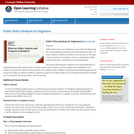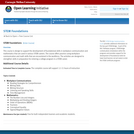
Short Description:
When you do a Google search with keywords “play in learning,” overwhelmingly you find play being utilized in childhood education. This lack of attention to play in higher education reflects the societal narrative that says, “play is for kids, not adults.” When play is associated with childhood or seen as trivial or a waste of time, utilizing play in “serious” adult learning can seem radical, scary, or reckless at most. The Professors at Play PlayBook challenges the idea that play is only for kids and presents a case for play and its value of play in adult learning. The PlayBook describes how the use of a playful pedagogy can reduce students’ barriers to learning, create connections, and awaken students’ interest and engagement in learning leading to deeper learning. The PlayBook tells an alternative story about play giving the reader permission to explore the possibility of a playful pedagogy in their teaching.The PlayBook is an anthology of almost 100 play techniques from over 65 professors across a variety of disciplines. The collection of techniques is organized around four key themes: the playful professor, connection-former or ice breaker activities, play to teach content, and playful whole course design. The chapters of techniques are nestled within commentary and a review of the research to provide context and an argument for the value of play in academia. The book features an introduction by noted play scholar Peter Grey and an afterward by play researcher Alison James. The PlayBook is an extension of the Professors at Play community, an international network of higher education faculty, researchers, and instructional designers who are committed to the transformational power of play in adult learning. You can find out more about Professors at Play: http://professorsatplay.org
Long Description:
When you do a Google search with keywords “play in learning,” overwhelmingly you find play being utilized in childhood education. This lack of attention to play in higher education reflects the societal narrative that says, “play is for kids, not adults.” When play is associated with childhood or seen as trivial or a waste of time, utilizing play in “serious” adult learning can seem radical, scary, or reckless at most. The Professors at Play PlayBook challenges the idea that play is only for kids and presents a case for the value of play in adult learning. The PlayBook describes how the use of a playful pedagogy can reduce students’ barriers to learning, create connections, and awaken students’ interest leading to deeper learning. The PlayBook tells an alternative and complex story about play – that is a seriously impactful tool that can help faculty change their view on and approach to learning. This book provides faculty with a deeper understanding and a framework for enhanced creativity and flexibility in their teaching. The PlayBook demonstrates that play is more than just an activity, it can be a mindset allowing academics to challenge the long-standing norms and status quos of education. The PlayBook communicates play’s place in adult learning from creating a sense of community, belonging, and engagement to a discussion of brain science and play’s place in the process of neuroplasticity. The PlayBook looks to provide a new perspective on play and give the reader permission to explore the possibilities of a playful pedagogy in their teaching.
The PlayBook is a beautifully messy anthology of almost 100 play techniques from over 65 multidisciplinary professors across the globe. The techniques are organized around four key themes: a) the playful professor, b) connection-former or ice breaker activities, c) play to teach content, and d) playful whole course design. The chapters of techniques are nestled within editorial commentary and a review of the research to provide context and argument for the value of play in academia. The book features an introduction by noted play scholar Peter Grey and an afterward by play researcher Alison James. Whether used as a reference for designing playful teaching, as documentation of the types of playful pedagogy available to the higher education professor or simply as a radical call to play more in the ivory tower, the Professors at Play PlayBook invites a fresh, and more fun, perspective on education. As of 2022, the Professors at Play community consists of almost 800 higher education faculty, researchers, and instructional designers who are interested in or committed to the transformational power of play in adult learning. The PlayBook was developed as a response to requests for not only more examples of what play looks like in higher education but also as a way to collect and document the amazingly playful work being done in higher education classrooms all over the world. You can find out more about Professors at Play: http://professorsatplay.org
Word Count: 109357
ISBN: 978-1-387-50503-6
(Note: This resource's metadata has been created automatically by reformatting and/or combining the information that the author initially provided as part of a bulk import process.)
- Subject:
- Education
- Material Type:
- Textbook
- Provider:
- Carnegie Mellon University
- Date Added:
- 12/09/2022

